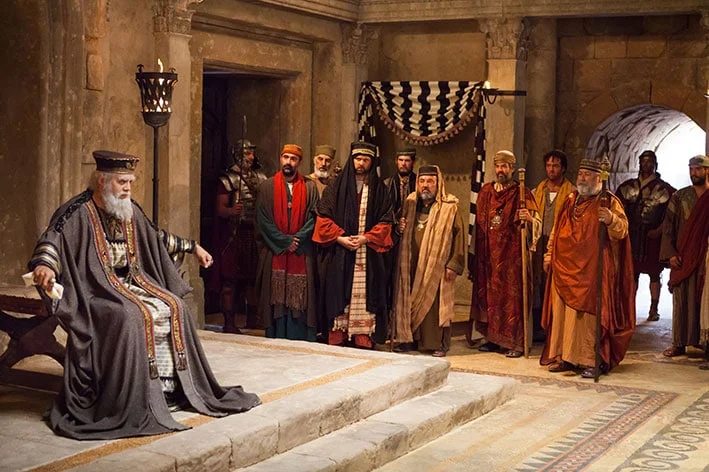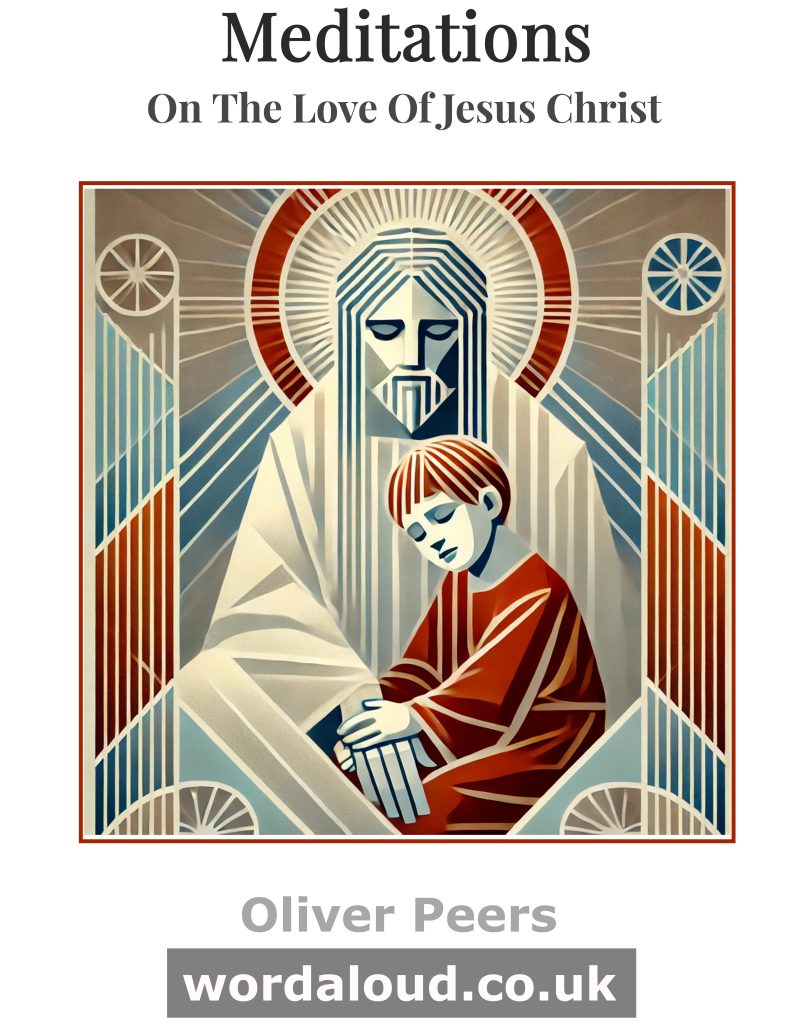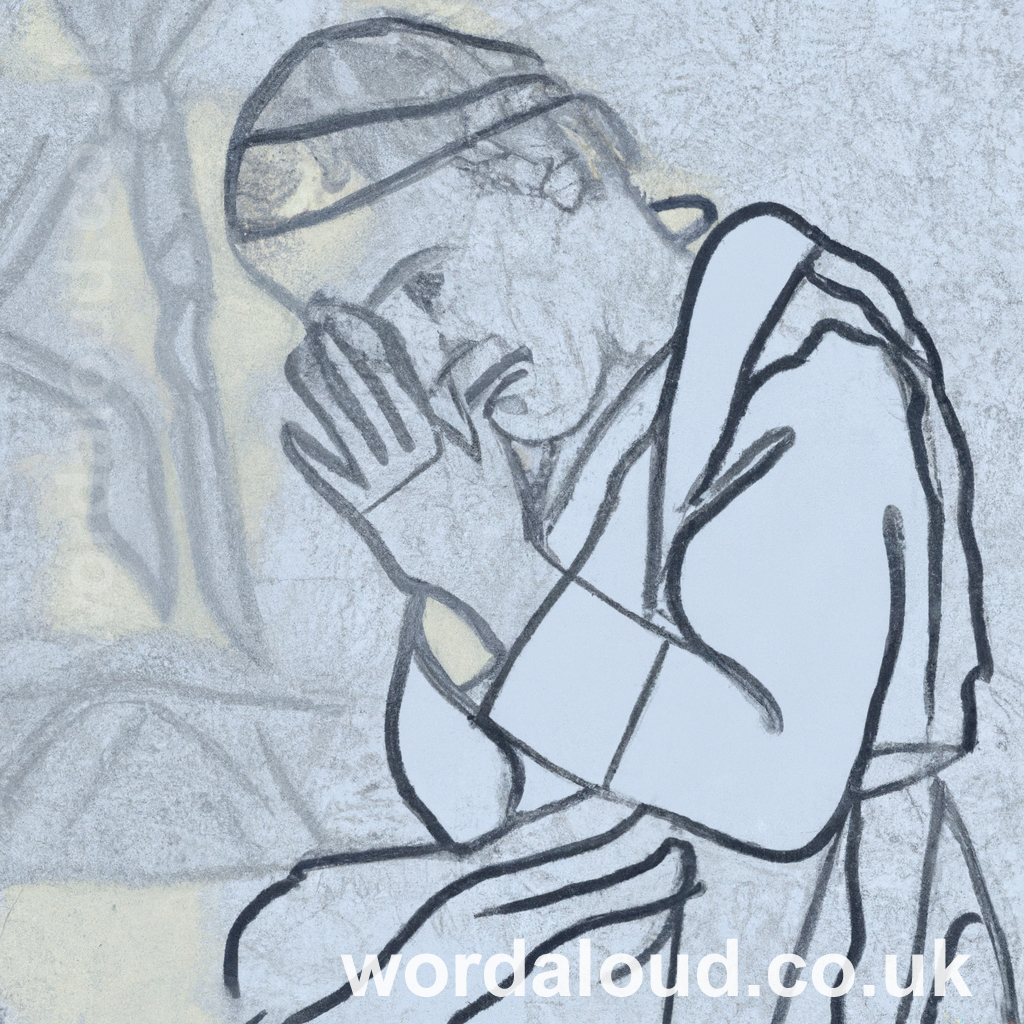King James Audio Bible | KJV | King James Version
King Herod
There were several individuals named Herod who played significant roles in ancient history, particularly in the history of the Roman Empire and the region of Palestine. Here is a brief overview of the most notable Herods:
- Herod the Great: Also known as Herod I, he was a Roman client king of Judea, ruling from 37 BC to 4 BC. He is perhaps most famous for his role in the biblical story of the birth of Jesus, in which it is said that he ordered the slaughter of all male children in Bethlehem under the age of two in an attempt to kill the newborn Jesus.
- Herod Antipas: Also known as Herod II, he was the son of Herod the Great and ruled over Galilee and Perea, two regions in Palestine, from 4 BC to 39 AD. He is mentioned in the New Testament as the ruler who imprisoned John the Baptist and later had him beheaded.
- Herod Agrippa I: Also known as Herod III, he was the grandson of Herod the Great and ruled over Judea from 41 to 44 AD. He is mentioned in the New Testament as the ruler who imprisoned the apostle Paul.
- Herod Agrippa II: Also known as Herod IV, he was the great-grandson of Herod the Great and ruled over parts of Palestine and Syria from 50 to 100 AD. He is mentioned in the New Testament as the ruler who heard Paul’s defence before the Roman governor Festus.
These rulers, who were known as the Herodian dynasty, were not Jewish but rather descended from a Greek family that had converted to Judaism. Despite this, they were appointed as rulers by the Roman Empire and were generally unpopular among the Jewish population due to their collaboration with the Roman occupation and their often brutal methods of rule.
Herod The Great
Herod the Great, also known as Herod I, was a Roman client king of Judea who ruled from 37 BC to 4 BC. He was born in 73 BC in Idumea, a region in southern Palestine, and was the son of Antipater the Idumean, an Edomite who had been appointed as a governor of Judea by the Roman general Pompey.
Herod rose to power after the Roman general Julius Caesar appointed him as king of Judea in 40 BC. He consolidated his power over the next few years by defeating his rivals and establishing himself as the undisputed ruler of the region.
As king, Herod embarked on a massive building program that included the expansion and renovation of the Temple in Jerusalem, the construction of the port city of Caesarea Maritima, and the fortification of several cities in Judea. He also commissioned the construction of a number of palaces and other buildings, including the famous Herodium, a palace-fortress located south of Jerusalem.
Despite his many accomplishments, Herod was a controversial figure who was known for his harsh rule and his willingness to use violence to maintain his power. He was married several times and had a large number of children, several of whom he had executed when they posed a threat to his rule.
One of the most famous stories associated with Herod is the biblical account of the birth of Jesus, in which it is said that he ordered the slaughter of all male children in Bethlehem under the age of two in an attempt to kill the newborn Jesus. According to the New Testament, Jesus was saved by his parents, who fled to Egypt, and later returned to Palestine after Herod’s death.
Herod died in 4 BC at the age of 70, leaving a legacy as one of the most significant rulers in the history of ancient Palestine.
Herod Antipas
Herod Antipas, also known as Herod II, was the son of Herod the Great and ruled over Galilee and Perea, two regions in Palestine, from 4 BC to 39 AD. He was born in 20 BC and was named after his father’s patron, the Roman emperor Augustus.
Like his father, Herod Antipas was known for his ambitious building projects, including the construction of the city of Tiberias on the Sea of Galilee and the expansion of the Temple in Jerusalem. He was also known for his political cunning and his ability to navigate the complex political landscape of the Roman Empire.
Herod Antipas is mentioned in the New Testament as the ruler who imprisoned John the Baptist, a prominent religious figure who criticized Herod’s marriage to his sister-in-law, Herodias. According to the New Testament, John was eventually beheaded at the request of Herodias’ daughter, Salome, who danced for Herod and his guests at a banquet.
Herod Antipas is also mentioned in the New Testament as the ruler who oversaw the trial and execution of Jesus. Although he initially wanted to release Jesus, he ultimately handed him over to the Roman authorities at the urging of the Jewish religious leaders.
Herod Antipas’ rule came to an end in 39 AD when the Roman emperor Caligula exiled him to Gaul, modern-day France. He died in exile a few years later.
Herod Agrippa I
Herod Agrippa I, also known as Herod III, was the grandson of Herod the Great and ruled over Judea from 41 to 44 AD. He was born in 10 BC and was the son of Aristobulus and Bernice, two of Herod the Great’s children.
Herod Agrippa I was well-educated and fluent in both Greek and Hebrew, and he was highly regarded by the Roman authorities for his loyalty and his ability to maintain order in Judea. He was appointed as king of Judea in 41 AD by the Roman emperor Claudius, who was impressed by his abilities and saw him as a reliable ally in the region.
As king, Herod Agrippa I continued the building projects of his grandfather and expanded the Temple in Jerusalem. He also implemented a number of reforms aimed at improving the lives of the Jewish people, including the construction of public works and the establishment of a system of courts to administer justice.
Herod Agrippa I is mentioned in the New Testament as the ruler who imprisoned the apostle Paul. According to the New Testament, Paul was arrested in Jerusalem and brought before Herod Agrippa I, who had him imprisoned for several years before releasing him and allowing him to continue his missionary work.
Herod Agrippa I died in 44 AD at the age of 34. His sudden death was widely mourned, and he was succeeded by his son, Herod Agrippa II.
Herod Agrippa II
Herod Agrippa II, also known as Herod IV, was the great-grandson of Herod the Great and ruled over parts of Palestine and Syria from 50 to 100 AD. He was born in 27 AD and was the son of Herod Agrippa I and Cypros, a Nabatean princess.
Herod Agrippa II was well-educated and fluent in both Greek and Hebrew, and he was highly regarded by the Roman authorities for his loyalty and his ability to maintain order in the region. He was appointed as the ruler of the regions of Chalcis and Abila by the Roman emperor Claudius in 50 AD, and later expanded his rule to include parts of Palestine and Syria.
As ruler, Herod Agrippa II was known for his diplomatic skills and his ability to navigate the complex political landscape of the Roman Empire. He was also known for his support of the Jewish people and his efforts to improve their lives, including the construction of public works and the establishment of a system of courts to administer justice.
Herod Agrippa II is mentioned in the New Testament as the ruler who heard Paul’s defence before the Roman governor Festus. According to the New Testament, Paul was arrested in Jerusalem and brought before the governor, who then appealed to Herod Agrippa II to hear his case. After hearing Paul’s defence, Herod Agrippa II declared him innocent and released him.
Herod Agrippa II ruled until his death in 100 AD, at the age of 73. He was survived by his son, Aristobulus, who later became the ruler of Chalcis.
AD 70
In AD 70, the Roman Empire under the leadership of Emperor Vespasian and his son, Emperor Titus, launched a military campaign against the Jews in Palestine in response to a rebellion that had broken out in the region. The campaign, which is known as the First Jewish-Roman War, ended in the complete destruction of the city of Jerusalem and the Temple, which had been the centre of Jewish religious and political life for centuries.
The destruction of Jerusalem and the Temple was a major turning point in Jewish history, and it is still remembered and commemorated by Jews around the world as the holiday of Tisha B’Av. The war also marked the end of the Herodian dynasty, as the last of the Herods, Herod Agrippa II, was forced to flee the region and seek refuge in Rome.
The First Jewish-Roman War had far-reaching consequences for the Jews, as it effectively ended their independence and brought them under Roman rule. The war also led to the diaspora, the dispersion of the Jewish people from their homeland, as many Jews were forced to flee the region and seek refuge in other parts of the Roman Empire and beyond.








